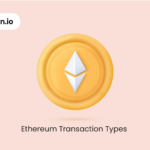What Is Crypto Mining? A Complete Beginner’s Guide
Have you ever wondered where cryptos like Bitcoin and ETH come from? Well, many cryptocurrencies’ new coins enter the market via crypto mining. Now, if you don’t know what crypto mining is, we are going to explain it to you in this blog.
We will dig deeper into the entire process and uncover certain secrets that you might not be aware of. So, let’s start with the basics.
What Is Crypto Mining?
Crypto mining refers to verifying and adding transactions to a blockchain or decentralized digital ledger. Miners are rewarded with new coins in exchange for their efforts.
In contrast to traditional banking institutions, which rely on a central authority to verify transactions, cryptocurrencies use a network of computers to achieve distributed consensus. These computers race to solve complicated mathematical problems that secure and verify the network.
Simply put, crypto mining is like solving an intricate digital puzzle. The first computer to solve the code creates a new block of transactions to add to the Blockchain and is rewarded with cryptocurrency.
How Does Crypto Mining Work?
Crypto mining, in its essence, involves three things: processing transactions, securing the network, and minting new coins.
1: The process of verifying transactions
On sending, the transaction made by this person will require verification before it gets onto the Blockchain. Miners aggregate these transactions and validate their legitimacy. This helps to discourage cheating, such as double spending, in which someone attempts to spend the same cryptocurrency at two different merchants.
2: SOLVING CRYPTOGRAPHIC PUZZLES
Miners are tasked with solving a difficult mathematical problem called a hash function to verify transactions. This process demands massive amounts of computing power. This is known as proof of work, and the first miner who solves the puzzle gets to add a fresh block to the Blockchain. This first way is referred to as proof-of-work (PoW), and it is used to ensure that the network is secure.
3: Adding blocks to the Blockchain
When a miner solves the puzzle, they announce it to the network. Other miners check the answer; if it’s right, the new block is appended to the Blockchain.
The miner who solves the puzzle receives a block reward made up of a specified amount of newly created coins and transaction fees charged by individual users.
Why is Crypto Mining Significant?
In the ecosystem of cryptocurrencies, crypto mining is relevant for many things.
Transaction Security
By confirming transactions, miners guarantee that cryptocurrency transfers are real and irreversible. Overall, the Blockchain is an incredibly safe system.
Decentralization
In contrast to traditional financial frameworks run by banks or governments, anybody with the proper hardware can part icipate in crypto mining to maintain the network. This ensures that cryptocurrencies remain free from control by any one central authority.
Coin Distribution
So-called proof-of-work-based cryptocurrencies like Bitcoin can only create new coins through mining. This guarantees an equitable and open method for allocating digital possessions.
What equipment do you need to mine crypto?
Mining is a hardware-intensive endeavor, one where specialized hardware is required for competitive success. During Bitcoin’s early days, anyone could mine from their home computer. Now, mining is very competitive, and more powerful machines are required.
CPU (Central Processing Unit) Mining
Early on, mining was done using a standard computer processor (CPU). But modern alternatives, like replacing the CPU, were slow and inefficient.
GPU Characteristic Mining Workload Unit
GPUs were preferred for mining as they can carry out multiple calculations at once, making it much easier and more efficient than CPUs. To increase mining power, many miners pool multiple GPUs to build rigs.
ASIC (Application- specific integrated Circuit) Mining
ASIC Miners come with specialized devices built specifically for the mining of cryptocurrencies. They are vastly more powerful than GPUs but also far more expensive and use enormous amounts of electricity.
Cloud Mining
Some mine remotely by renting mining power from expensive mining hardware located in data centers far away. This is called cloud mining. Though it cuts out the need for costly equipment, this practice also has risks— like the potential for being scammed and deals earning less.
Is Crypto Mining Profitable?
It can be profitable to mine, but it does depend on a number of factors.
Mining Difficulty
With each additional miner joining, puzzles become more difficult to solve, resulting in lower earnings. To remain competitive, miners must have faster hardware.
Electricity Costs
Mining also uses a lot of electricity. The profitability of mining depends on the price of electricity in your area. Many miners are in areas where electricity is inexpensive to maximize their gains.
Hardware Costs
ASIC miners and high-end GPUs are costly. Before investing in mining equipment, we must check how long it will take to cover the price of the equipment from mining rewards.
Market Prices
The prices of cryptocurrencies may be highly volatile. Subsequently, in the context of a coin price crash, mining rewards are not likely to generate sufficient income to cover electricity and/or hardware costs.
Obstacles and Risks of Crypto Mining
Crypto mining is not as easy as turning on a computer and watching money come in. It has enormous challenges and risks.
High Energy Consumption
Bitcoin mining uses an enormous amount of electricity, more energy than some whole countries , which raises concerns about its environmental footprint.
Mining Centralization
The principle behind crypto mining was that it would be decentralized. Yet today, large mining farms and pools dominate the majority of the hash power , raising the fear that some organizations could control the network.
Hardware Costs and Upgrades
My Answer: Mining hardware depreciates over time. When mining difficulty grows, old systems become less efficient, making miners frequently upgrade.
Regulatory Risks
Due to financial laws and energy concerns, some countries have prohibited crypto mining. Before investing, check up on the status of mining where you’re planning to do it legally.
The Future of Crypto Mining
The cryptocurrency mining industry continues to evolve rapidly. Concerns about energy consumption are rising, and new mining technologies and alternative consensus mechanisms are being formed.
From Proof-of-Work (PoW) to Proof-of-Stake (PoS)
Others, such as Ethereum, are transitioning from proof-of-work to proof-of-stake. This is the cause of the mining system, which means users want to serve their coins’ stake to validate transactions and reduce energy consumption.
Green Mining Solutions
To make mining sustainable, miners are also trying renewable energy such as solar, wind, and hydropower. Even some businesses are using the excessive temperatures from some mining rigs for more practical purposes.
Innovative Mining Hardware
A hungry generation of miners is constantly being developed, but the latest generation aims to boost output while lowering power draw. New leaps in semiconductor technology may lower barriers to entry in mining and reduce energy usage.
Should You Start Mining?
Mining cryptocurrency can be a lucrative business, but it’s not suitable for everyone. It requires a lot of money in hardware, cheap electricity to power the racks of computers, and a good knowledge of the risks involved.
If you are new, you may want to explore options with mining pools or cloud mining rather than being a solo miner. This way, you can learn the basics without investing a lot of money.
The mining ecosystem does not remain static. Some view it as a golden opportunity, while others feel that more modern tech, like proof-of-stake, will render traditional mining obsolete.
Final Thoughts
Cryptocurrency mining is the backbone of blockchain networks such as Bitcoin, which helps keep them secure and decentralized and distribute digital assets fairly. Although it provides an opportunity for financial gain, it equally brings obstacles such as energy requirements, cost, and regulatory ambiguity.
If you do decide to get into mining, make sure you do your research, calculate your costs, and watch industry trends. Much will depend on how technology evolves and how the industry responds to growing criticism over energy efficiency and decentralization for the future profitability of mining.









